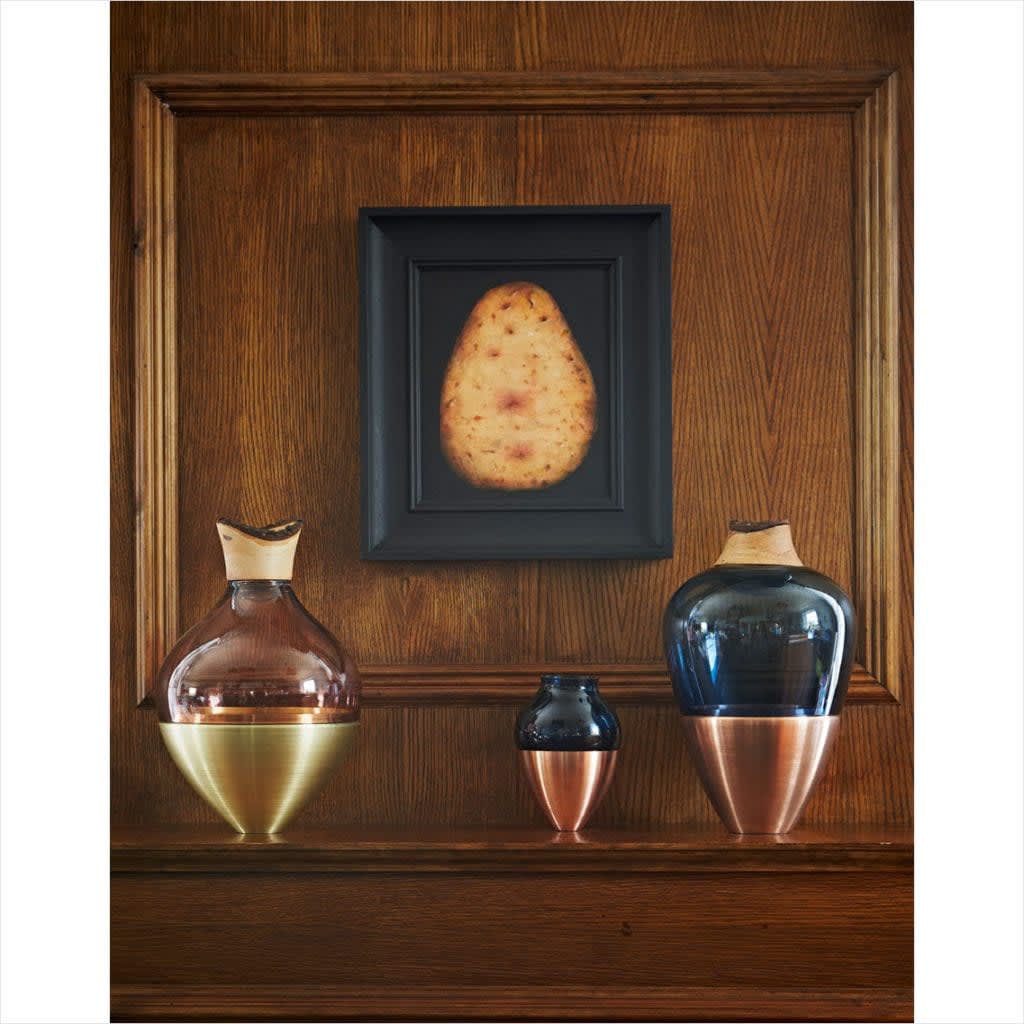-

Tony Beaver is a South London artist perhaps best known for his exceptional portraits of subjects as diverse as the humble potato to the eccentric, British stars he paints from the 60s and 70s, like Tommy Cooper, Kenneth Williams, David Bowie and Johnny Rotten.
We always look forward to visiting Tony Beaver’s studio, the eager anticipation building as we walk down the path towards his studio, at the bottom of the garden. It’s always a marvel to see his latest body of work and to hear the thought process behind it but we also find it incredibly interesting to watch the transformation of his character as he talks about his work. Ordinarily quite a shy person who, by his own admission, used to actively hide from his art tutors at college to avoid having to talk to them, Tony becomes so animated and impassioned when talking about his work and that passion is infectious. You come away enthralled by his latest collection of paintings, keen to pass on the bug.
In an attempt to do just that, we recently interviewed the artist about his work.
CF: You trained under Michael Craig-Martin at Goldsmiths. How was that experience and how did it shape you as an artist?
TB: My time as a student had its ups and downs. I began with cocksure certainty only to end up three years later in a cloud of confusion and befuddlement. I suppose, in retrospect, the most important lesson I learnt from my time at Goldsmiths is, keep it simple, allow for complications.
A significant amount of my time at Art School was spent hiding from tutors. In toilets, behind curtains, anywhere to avoid the torture of being questioned. This feeling still remains.Potato, oil on canvas, 40 x 30 cm, 2020
CF: You paint a wide range of portrait subjects, from the humble potato to those of British stars like Kenneth Williams and David Bowie. What attracts you to a particular subject as inspiration for your paintings?
TB: I chose to paint potatoes for their lowliness. To give this humble object the sort of attention usually reserved for portraiture gives the painting an emotional kick. The lowly becomes elevated. This applies to many of the subjects I paint. A bucket of water, a cracked ceramic bowl, a guinea pig.
The people I paint tend to represent something of Britishness for me. Something of a particular era, a particular way of being a man. David Bowie, Tommy Cooper, Kenneth Williams, are figures interwoven into my life. Johnny Rotten, Charles Hawtrey, these people formed me.
I enjoying using imagery that I’ve not seen in a painting before.
Tommy Cooper, oil on canvas, 81 x 81 cm, 2018
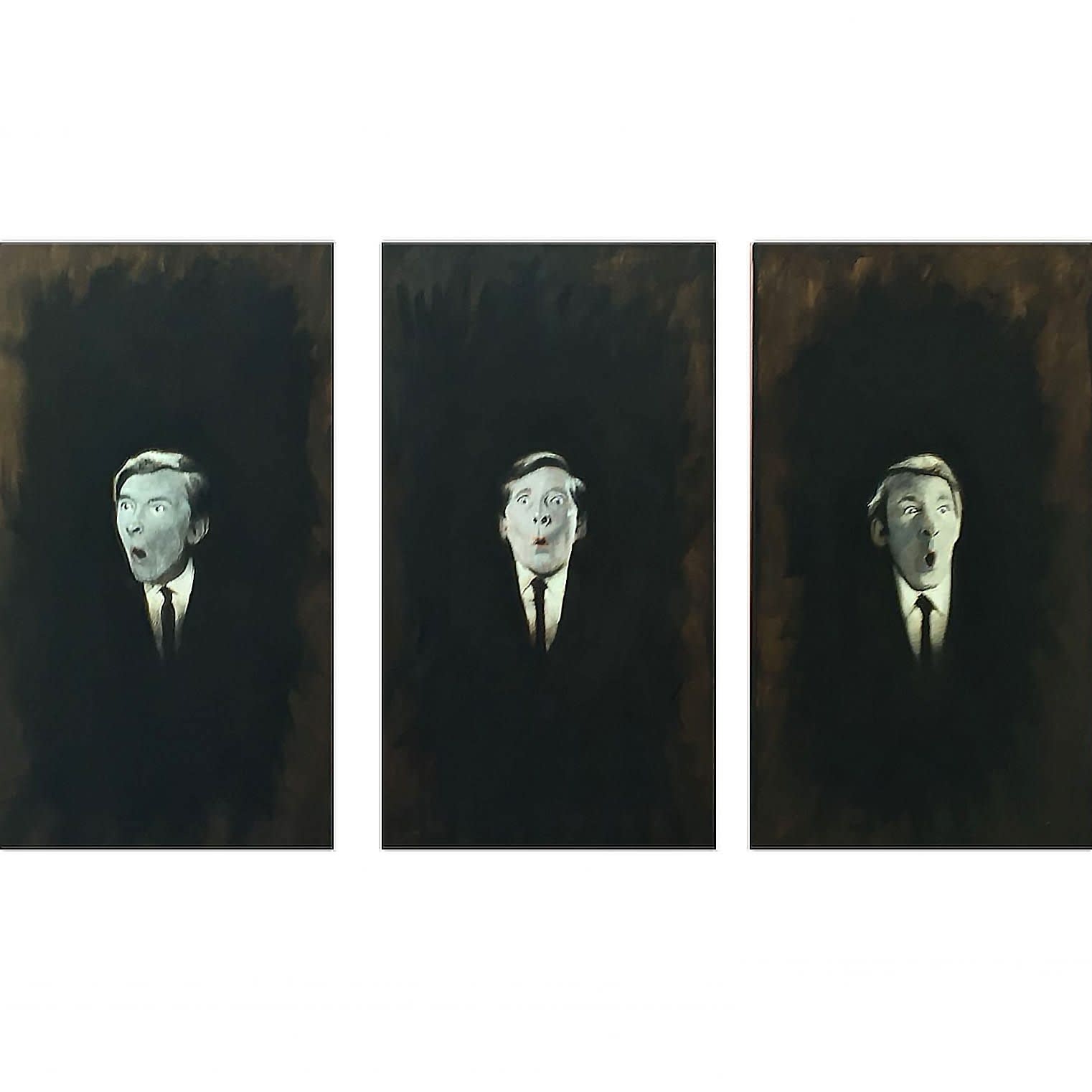
CF: Which artists inspire and inform your work?
TB: I love Baroque European Art. I love paintings which give the feeling that a miracle is about to happen. Caravaggio, Velazquez, Rembrandt. I love seeing great paintings in dark churches. Painting employed to enable the miraculous.
CF: Your paintings often evoke a strong mix of emotions; a sense of sadness and loss, of majesty and wonder, is this your intention?
TB: A painting isn’t just a picture of a thing. It’s a spark to ignite ideas and feelings. A stone thrown into a pond, creating ripples.
While painting, my hand, eye and brain are almost totally involved in the tricky business of getting things right, in colours, the weight of colour, the relationships of colour and form, you know, aesthetic stuff. All the other things happen (on a good day) of their own accord. They come almost subconsciously. It is my belief that if the sense of touch is honest and sensitive then all these feelings will emerge. It’s unavoidable. We’re doomed to express ourselves and our emotions.
CF: What makes you return to a subject time and time again?
TB: I see each subject I take on as a series. A subject that ended after just one image would seem like a cul de sac to me. I like to see a subject develop and deepen over time. If you were to see a room of potatoes painted by me over a period of 20 years, the subject would not only be the individual potato but also the nuance of difference between them. It complicates the issue.
CF: You work on quite different scales. How do you decide this?
TB: The smaller the thing I’m painting, the larger the painting seems to need to be. I painted a series of guinea pigs recently. The only way I could see to do them was to make the space around them as big as possible. I reached the limits of size possible in my studio. Yet still they could have been bigger. I visualised paintings the size of a double decker bus or a three story building. I have certainly found it a truth that the smaller the object the more space it can control around itself.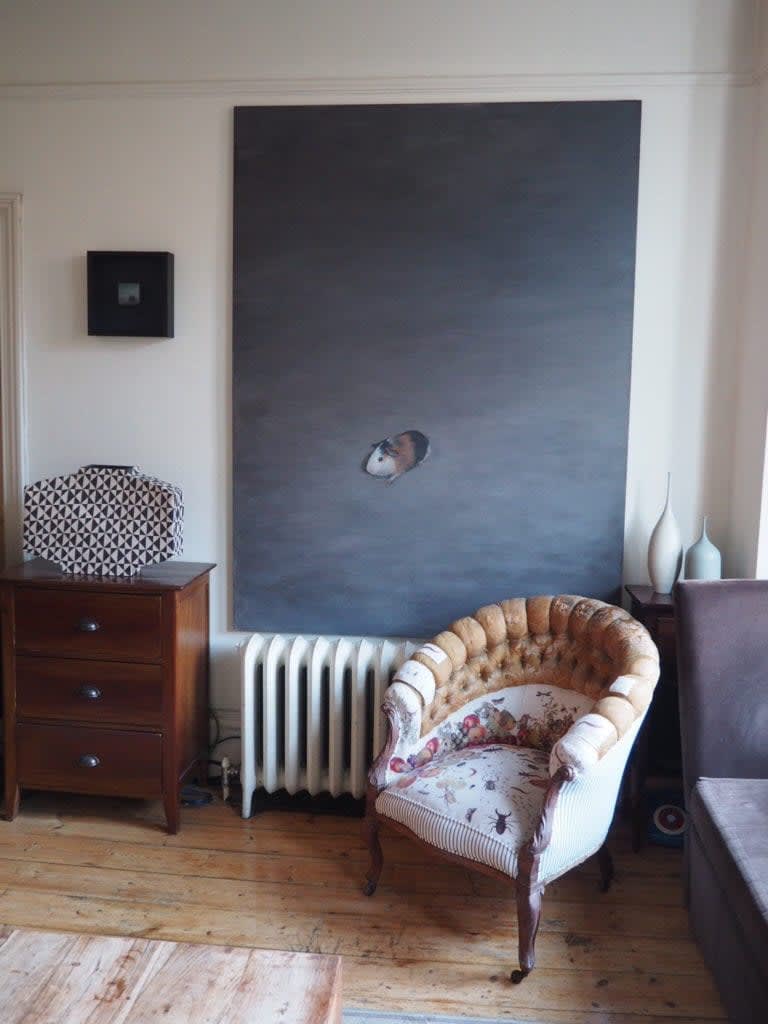
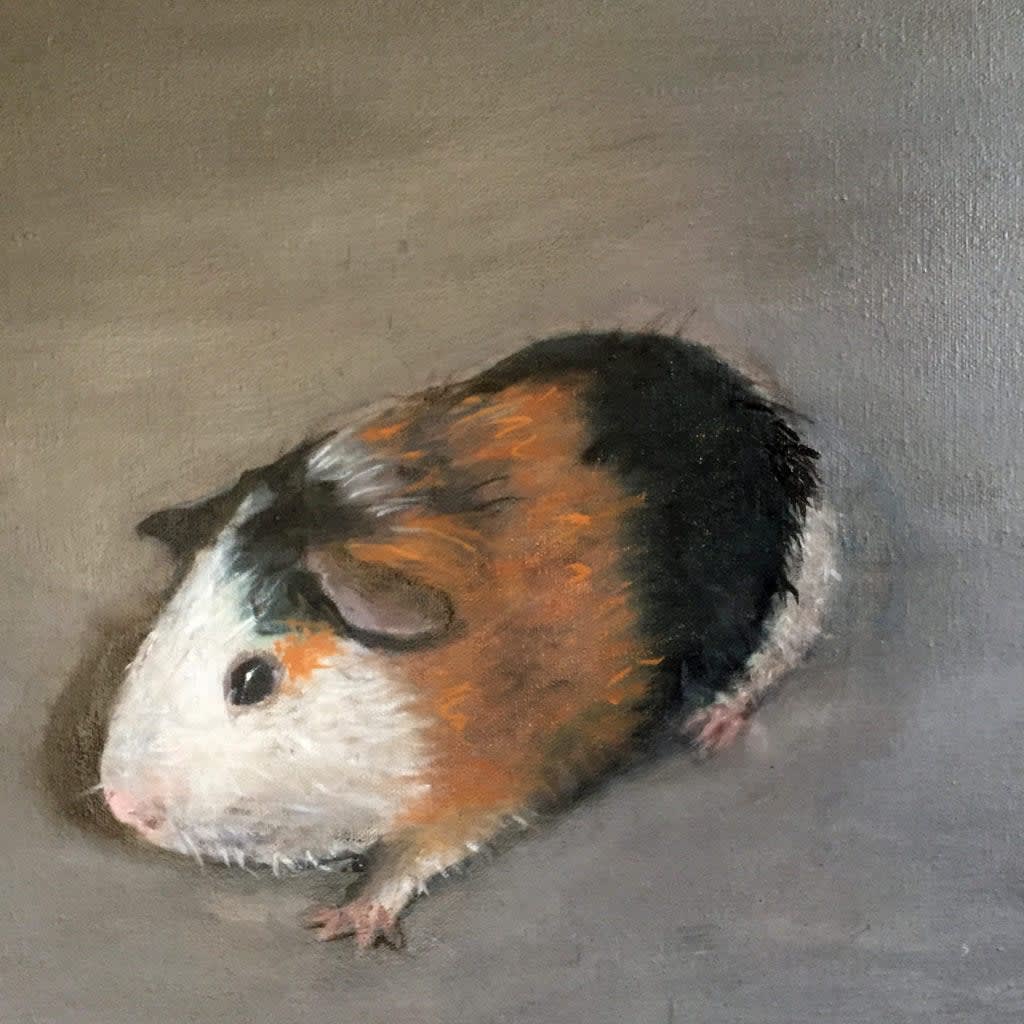
CF: How does living in London influence your work?
TB: This is a tricky question for me. I was born in London and know nothing else. I feel as though I am made of the same atoms as the buildings, the history, the smog.
Working anywhere else, I think I would feel like an Antelope in a tube station.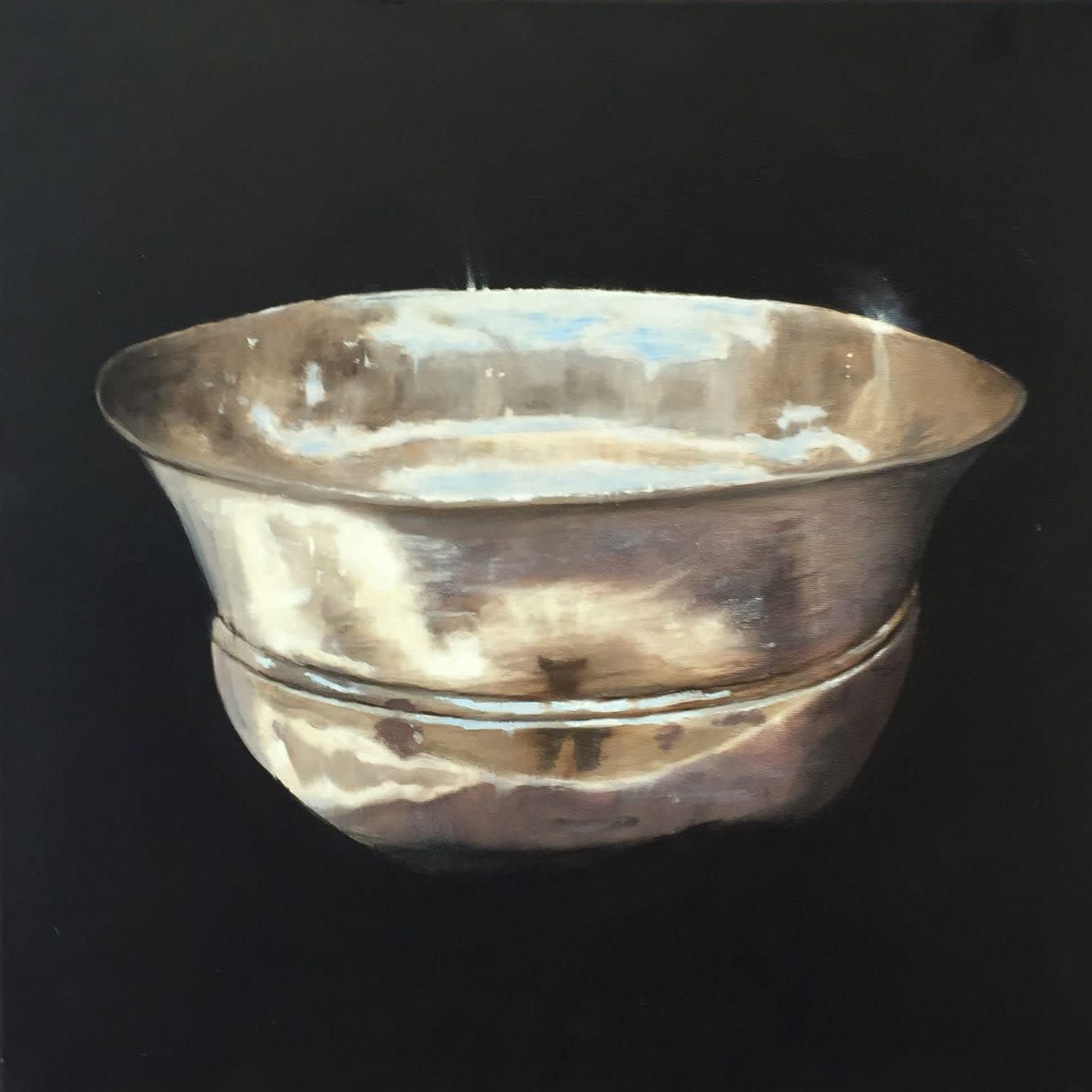

CF: Tell us about your water paintings?
TB: Water is the perfect subject for me. It’s ubiquitous, lowly and plentiful. At the same time, it is the carrier of life, the most valuable of all substances. If, at the end of all things, we were given the choice, a mountain of gold or a glass of water?
As a subject for painting I am reminded of alchemy. Turning oil paint into water. A transformative occupation that is as close as I’ll get to painting a religious painting.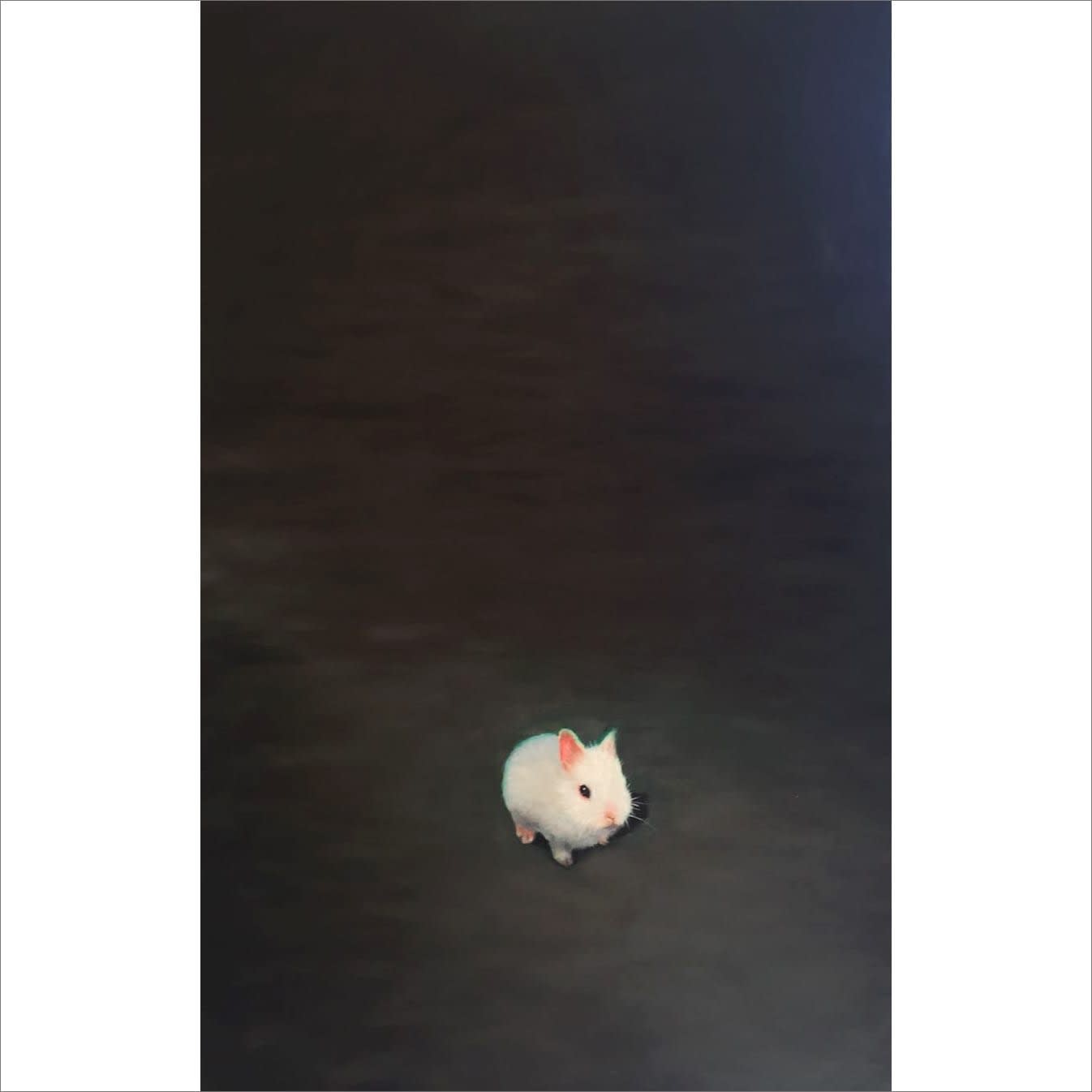
CF: Earlier this year you embarked a new body of paintings featuring another domestic animal, the bunny rabbit. Tell us about your Baby Bunny paintings?
TB: There is a whole layer of the internet devoted to cuteness. We are bombarded with images of cute babies, kittens, puppies and so on. And of course, baby bunnies.
When I was painting the Baby Bunny series, l imagined the space around the rabbit as the unknowable, vast, dark and uncontrollable depth that is the Web.
I went on to imagine the bunnies and their reassuring sweetness to be the guardians of this space. For me, these ill equipped gatekeepers stand between us and all the perilous pathways into infinite possibilities and dark endings.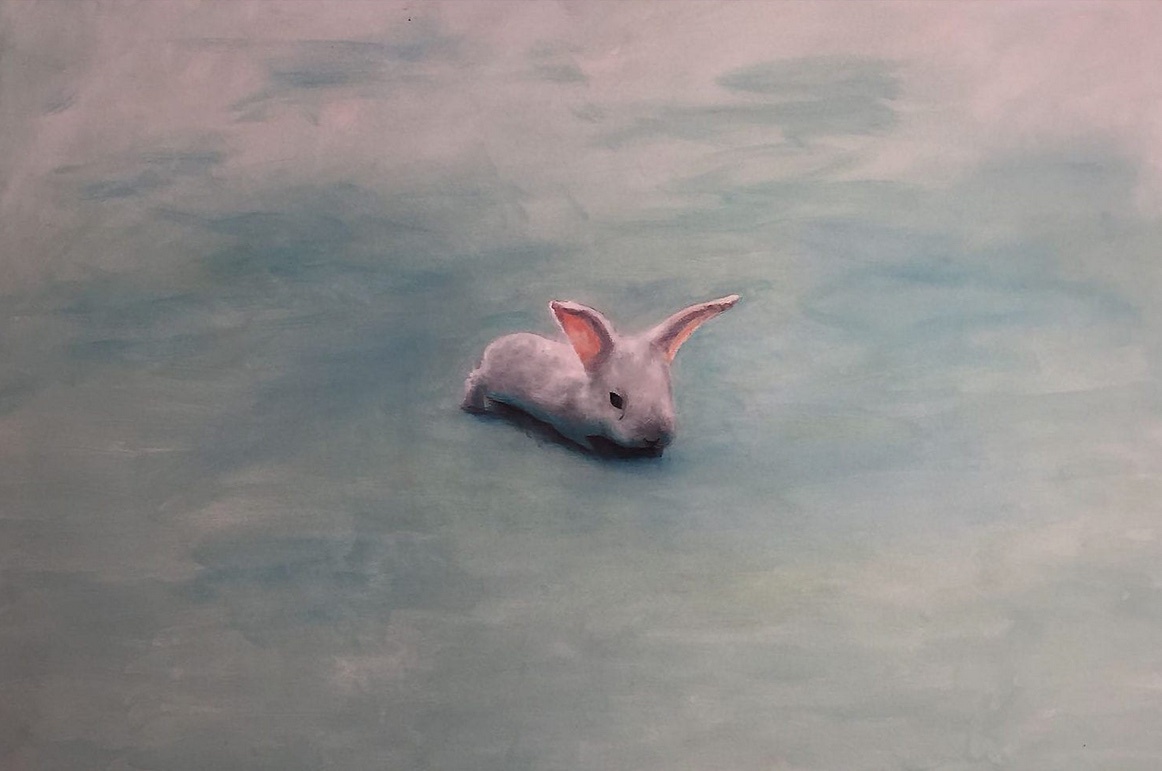
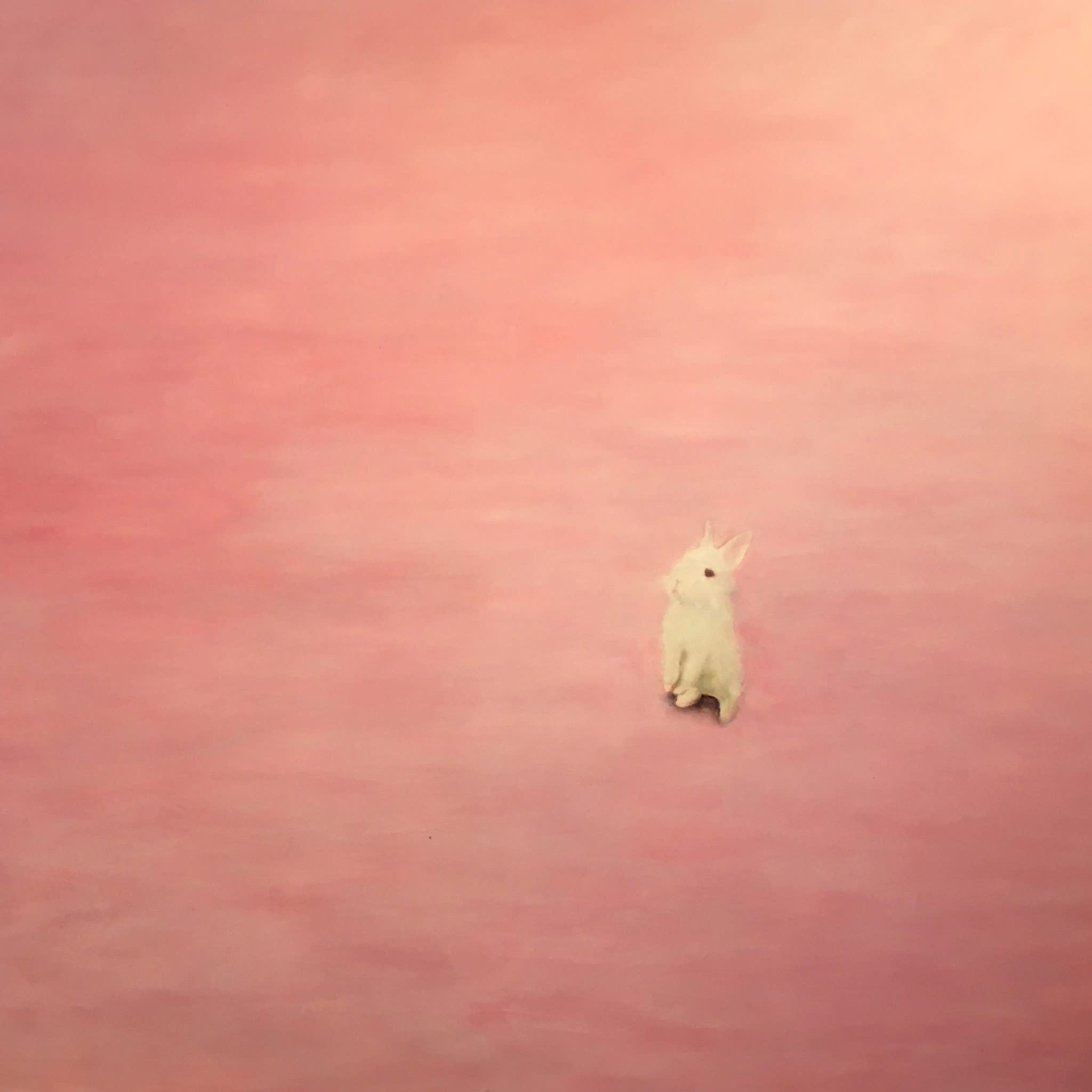
CF: Can you tell us what your career highlights have been so far?
TB: Greatest achievement? I’m still here, still painting.
CF: What’s next for you?
TB: I fantasize about a series of paintings that is completely unrecognizable to me in both subject and style. Imagine the relief of not having to be me, to not paint like me.
Every day a reinvention.
Tony Beaver went to Goldsmiths’ College in the mid-Eighties, just before Damien Hirst and his contemporaries where he was taught by Brit-art mentor Michael Craig Martin. He completed his MA in Barcelona and has been shortlisted for the Garrick Milne Prize, The Celeste Prize and the Discerning Eye. Cavaliero Finn has a range of Tony’s paintings available to view and purchase online or you can contact us to arrange a commission or studio visit.
